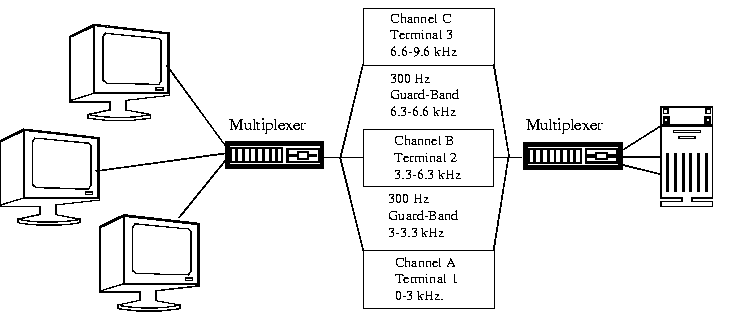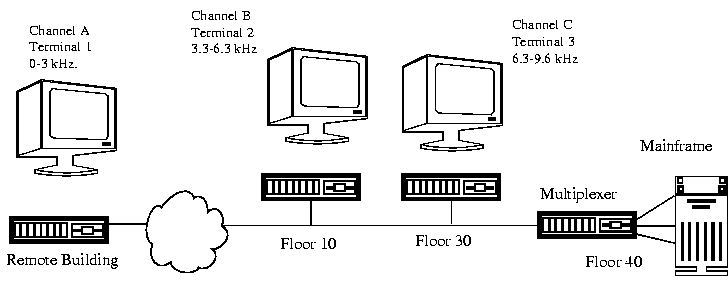| Introduction to Data Communications | ||
|---|---|---|
|
|
30a. FDM - Frequency Division Multiplexing | Next |
For example, if we had our 3 terminals each requiring a bandwidth of 3 kHz and a 300 Hz guard-band, Terminal 1 would be assigned the lowest frequency channel 0 - 3 kHz, Terminal 2 would be assigned the next frequency channel 3.3 kHz - 6.3 kHz and Terminal 3 would be assigned the final frequency channel 6.6 kHz - 9.6 kHz.
The frequencies are stacked on top of each other and many frequencies can be sent at once. The downside is that the overall line bandwidth increases. Individual terminal requirement were 3 kHz bandwidth each, in the above example: the bandwidth to transmit all 3 terminals is now 9.6 kHz.

FDM does not require all channels to terminate at a single location. Channels can be extracted using a multi-drop technique, terminals can be stationed at different locations within a building or a city.
FDM is an analog and slightly historical multiplexing technique. It is prone to noise problems and has been overtaken by Time Division Multiplexing which is better suited for digital data.

| Introduction to Data Communications | ||
|---|---|---|
|
|
Table of Contents | Next |